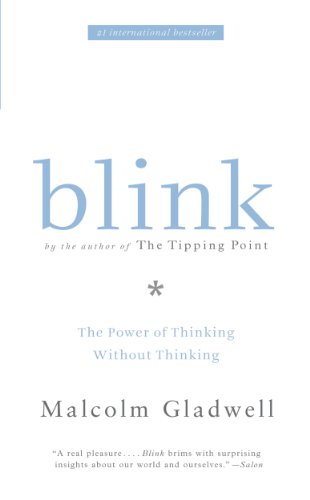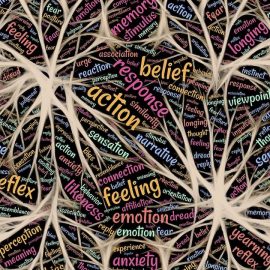

This article is an excerpt from the Shortform summary of "Blink" by Malcolm Gladwell. Shortform has the world's best summaries of books you should be reading.
Like this article? Sign up for a free trial here .
How accurate are snap judgments? What are the dangers inherent in making snap judgments—sizing up a situation based on superficial information, without much conscious deliberation?
Snap judgments can go wrong for a few reasons: First, we can be overly superficial when making a judgment. Second, we can fail to recognize when our conscious and unconscious attitudes don’t match, which leads us to make decisions that are inconsistent with our conscious beliefs. And third, we’re far more susceptible to the effects of priming than we think.
Learn about the psychology of snap judgments and how they can go wrong.
Superficial Thin-Slicing
Thin-slicing doesn’t always serve us. Sometimes we make superficial snap judgments.
Often thin-slicing helps us get below the surface details of a situation to find deep patterns. But this deep dive can get interrupted, leaving us with a snap judgment that’s based on irrelevant surface details.
The Case of Warren Harding
Gladwell gives the example of the 29th president of the United States, Warren Harding, to show how easy it is to get distracted by surface details. Harding had an undistinguished political career. He wasn’t particularly smart, rarely took a stance on (or interest in) political issues, gave vague speeches, and spent much of his time drinking and womanizing.
Still, Harding climbed the political ranks and became president. He’s widely regarded as one of the worst presidents in history. (Shortform note: More recently, some historians have argued that Harding’s presidency deserves a more balanced assessment.) How did he get the position in the first place?
As Gladwell notes, Harding looked like a president. His distinguished appearance and deep, commanding voice won voters over. They unconsciously believed that good-looking people make competent leaders. Harding’s looks and presence triggered associations so powerful they overrode voters’ ability to look below the surface, at his qualifications (or lack thereof). When we’re similarly influenced by superficial but irrelevant qualities, Gladwell says we’re making a “Warren Harding error.”
| Warren Harding and the Halo Effect What Gladwell refers to as “Warren Harding errors” are known in psychology as the halo effect: our tendency to allow positive impressions of someone (based on their appearance, clothing, or voice) to influence our judgments about other personal characteristics such as intelligence and morality. Psychologists have formally studied the halo effect in politics for decades. They’ve found, for example, that competent-looking faces predict positive election outcomes and that both physical and vocal attractiveness affect candidate ratings. The halo effect applied in reverse (for example, the fact that unattractive people are judged as more likely to commit crimes) is known as the “horn effect.” |
Mismatched Conscious and Unconscious Attitudes
As Gladwell points out, our snap judgments can be both the product and the root of prejudice and discrimination. Our attitudes about race and gender, for instance, operate on two levels.
- Our conscious attitudes are what we choose to believe and how we choose to behave. They are the source of our deliberate decisions.
- Our unconscious attitudes are our unthinking, automatic associations.
Mismatches between these two levels can lead us to behave in a biased manner even when we think we’re being impartial.
| Unconscious Attitudes: The Name-Letter Effect Do you like some letters of the alphabet more than others, to the point of selecting your romantic partner based on the letters in their name? If you think about it consciously, this idea seems absurd. Of course you select someone based on their personal qualities, not their name. However, research shows that on an unconscious level, we’re often drawn to people whose names share letters (particularly first or last initials) with our own. This is called the “name-letter effect” and occurs because of implicit egotism. We like ourselves, therefore we like the letters in our own names. In a 2004 paper titled “How do I love thee? Let me count the Js,” researchers confirmed this effect and found that it also extended to numbers: Participants preferred people who’d been assigned experimental codes that were similar to the numbers in their birthdays. The effect isn’t limited to romantic partners: We also prefer brand names that share our initials. |
The Implicit Association Test
To show that our unconscious attitudes don’t always match up with our conscious beliefs, Gladwell introduces the Implicit Association Test (IAT). The IAT is a tool that attempts to measure the unconscious associations that people have with certain categories, for example gender or race. The creators of the IAT that measures racial bias argue that it can uncover your implicit bias through the measurement of your reaction time. Are you faster to react when pairing positive words, such as “wonderful,” with white faces or black faces? How about negative words such as “evil”? (You can find the IAT online at www.implicit.harvard.edu if you’re interested in trying it.)
Regardless of their stated beliefs, more than 80% of IAT-takers have “pro-white associations.” In other words, it takes slightly longer for most people to put words like “glorious” and “wonderful” in the “African American” category than to put words like “hurt” and “evil” in the same category.
This doesn’t just apply to test-takers who aren’t African American—50% of more than 50,000 African Americans tested have pro-white associations.
The Implications of Unconscious Racial Bias
As Gladwell points out, the implications of a mismatch in conscious and unconscious beliefs are unsettling. When we act automatically, we depend on our implicit attitudes. If you have strong pro-white associations, you’ll act differently around someone who’s Black, and you probably won’t even be aware that you’re behaving differently. You might, for example, show less positive emotion or make less eye contact.
Let’s say you’re a Black woman explaining your symptoms to a white male doctor with pro-white associations. Your unconscious mind picks up on the doctor’s subtle distance and lack of eye contact, and you lose confidence and start struggling to articulate your thoughts clearly. The doctor’s unconscious mind picks up on this. He gets the gut feeling that you’re making up or exaggerating your symptoms, perhaps guessing that it’s to get access to a particular medication. He sends you away without a prescription—leaving you suffering and reinforcing his own unconscious pro-white associations.
Our unconscious racial and gender attitudes matter, regardless of the conscious attitudes we articulate.
The Power of Priming
Gladwell points to research evidence on priming that shows our unconscious minds to be extremely suggestible. This makes the unconscious vulnerable to negative suggestions, but it also makes it available for positive suggestions. Priming sheds light on one way to influence otherwise inaccessible unconscious processes.
Most of the classic studies on priming use images presented subliminally. However, there are other ways to trigger this effect: For example, you can use particular words in the lead-up to a task or ask for particular information about the participants (see below) to influence the result.
| Priming Different Stereotypes Leads to Differing Performance The subtle priming of a particular stereotype can affect people’s performance in domains that relate to the stereotype. A classic 1999 study, for example, found significant priming effects on the performance of Asian American women in the United States on a math exam. The participants were divided into three groups. One group answered questions about their ethnic identity before starting the exam, another group answered questions about their gender identity, and the third group—the control group—answered questions that were unrelated to both ethnicity and gender. Participants whose Asian American identity had been primed through the initial questionnaire performed the best on the exam. This was followed by the control group. The group whose female gender identity had been primed performed worst of all. These researchers then carried out the same experiment in Canada, a country in which the ethnic stereotype that Asian people are better at math is less prevalent. In Canada, priming both gender and ethnic stereotypes led to poorer performance. This study was replicated in 2014 with similar results, but with the added proviso that participants needed to be familiar with the relevant stereotypes for the priming effect to work. Given the ongoing reproducibility crisis in psychology (more on this below), replication studies are important to buttress the credibility of key findings. |
These experiments show us that priming can have devastating effects on our unconscious attitudes and, consequently, our lives. But they also show us a path forward. If we can negatively influence our hidden attitudes, we can also positively influence them.
(Shortform note: The effectiveness of priming is debatable, and priming-related findings have been one of the major casualties of the reproducibility crisis in scientific research. Many follow-up studies on priming have failed to replicate the original results, suggesting that the results were either cherry-picked to yield the best results, statistically manipulated, or, at worst, fabricated. At best, priming is a more complex phenomenon than was thought at the time Gladwell wrote Blink.)
What Can You Do to Change Your Unconscious Biases?
How do you fix something that happens below the level of conscious thought? Gladwell argues that you can retrain your implicit assumptions by being aware of them and actively using your conscious mind to counter them. For example, you can:
1. Use priming to your advantage.
Gladwell suggests that if you’re about to take the IAT, or to do anything in which unconscious racial bias might be activated, you strategically look at images of successful people of color before starting. Doing this, he says, will prompt your unconscious to make positive associations.
(Shortform note: The priming may not need to be so specific. In one study, people who were primed to think about shared human experiences across cultures showed lower anti-Arab bias. In this study, two different forms of priming were effective. The first was looking at pictures of people in different cultures engaged in normal social activities, while the second was thinking about meaningful childhood memories that might be shared across cultures.)
2. Change your experiences.
Your unconscious attitudes are based on your environment and the accumulation of prior experiences. To change your unconscious attitudes, Gladwell says you need to change your environment and experiences.
When you become aware of an implicit association that’s discriminatory—perhaps you take the race section of the IAT and you’re one of the 80% of people tested who have a white preference—Gladwell suggests that you alter the association by exposing yourself to people who counter your implicit biases. Read books, watch movies, and become familiar and comfortable with cultures that your unconscious mind discriminates against. You’re training your unconscious mind to change its opinion.
(Shortform note: Many authors who examine racial prejudice would argue that mere exposure isn’t sufficient to change unconscious attitudes. In So You Want to Talk About Race, for example, Ijeoma Oluo argues that conscious engagement, especially through difficult conversations that are specifically about racial issues, is key in changing attitudes.)
———End of Preview———

Like what you just read? Read the rest of the world's best summary of "Blink" at Shortform . Learn the book's critical concepts in 20 minutes or less .
Here's what you'll find in our full Blink summary :
- How you can tell if a marriage will fail, within 3 minutes
- Why your first impressions are usually surprisingly accurate
- The dark side to making first impressions, and how to avoid the,






